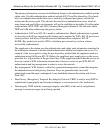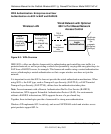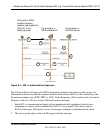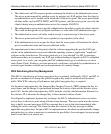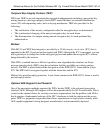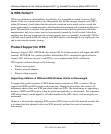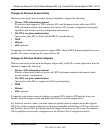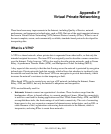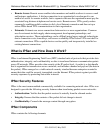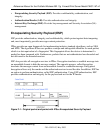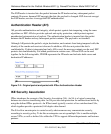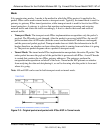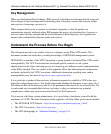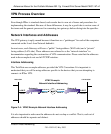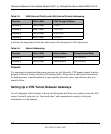
Virtual Private Networking F-1
201-10301-02, May 2005
Appendix F
Virtual Private Networking
There have been many improvements in the Internet, including Quality of Service, network
performance, and inexpensive technologies, such as DSL. But one of the most important advances
has been in Virtual Private Networking (VPN) Internet Protocol security (IPSec). IPSec is one of
the most complete, secure, and commercially available, standards-based protocols developed for
transporting data.
What is a VPN?
A VPN is a shared network, where private data is segmented from other traffic, so that only the
intended recipient has access. The term VPN was originally used to describe a secure connection
over the Internet. Today, however, VPN is also used to describe private networks, such as Frame
Relay, Asynchronous Transfer Mode (ATM), and Multiprotocol Label Switching (MPLS).
A key aspect of data security is that the data flowing across the network is protected by encryption
technologies. Private networks lack data security, which allows data attackers to tap directly into
the network and read the data. IPSec-based VPNs use encryption to provide data security, which
increases the network’s resistance to data tampering or theft.
IPSec-based VPNs can be created over any type of IP network, including the Internet, Frame
Relay, ATM, and MPLS, but only the Internet is ubiquitous and inexpensive.
VPNs are traditionally used for:
• Intranets: Intranets connect an organization’s locations. These locations range from the
headquarters offices, to branch offices, to a remote employee’s home. Often this connectivity
is used for e-mail and for sharing applications and files. While Frame Relay, ATM, and MPLS
accomplish these tasks, the shortcomings of each limits connectivity. The cost of connecting
home users is also very expensive compared to Internet-access technologies, such as DSL or
cable. Because of this, organizations are moving their networks to the Internet, which is
inexpensive, and using IPSec to create these networks.



